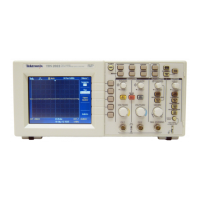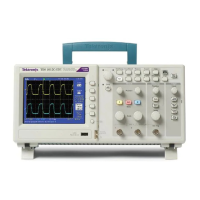

Do you have a question about the Tektronix TDS200 Series and is the answer not in the manual?
| Channels | 2 or 4 |
|---|---|
| Memory Depth/Record Length | 2.5k points |
| Input Coupling | AC, DC, GND |
| Timebase Accuracy | 50 ppm |
| Display | 5.7-inch color LCD |
| Vertical Resolution | 8 bits |
| Trigger Modes | Edge, Video, Pulse |
| Math Functions | Add, Subtract, Multiply, FFT |
| Maximum Input Voltage | 300 Vrms |
| Power Requirements | 100-240 VAC, 45-66 Hz |
| Bandwidth | 100 MHz |
| Vertical Sensitivity | 2 mV/div |
| Timebase Range | 5 ns/div |
| Connectivity | USB |
| Input Impedance | 1 MΩ |











